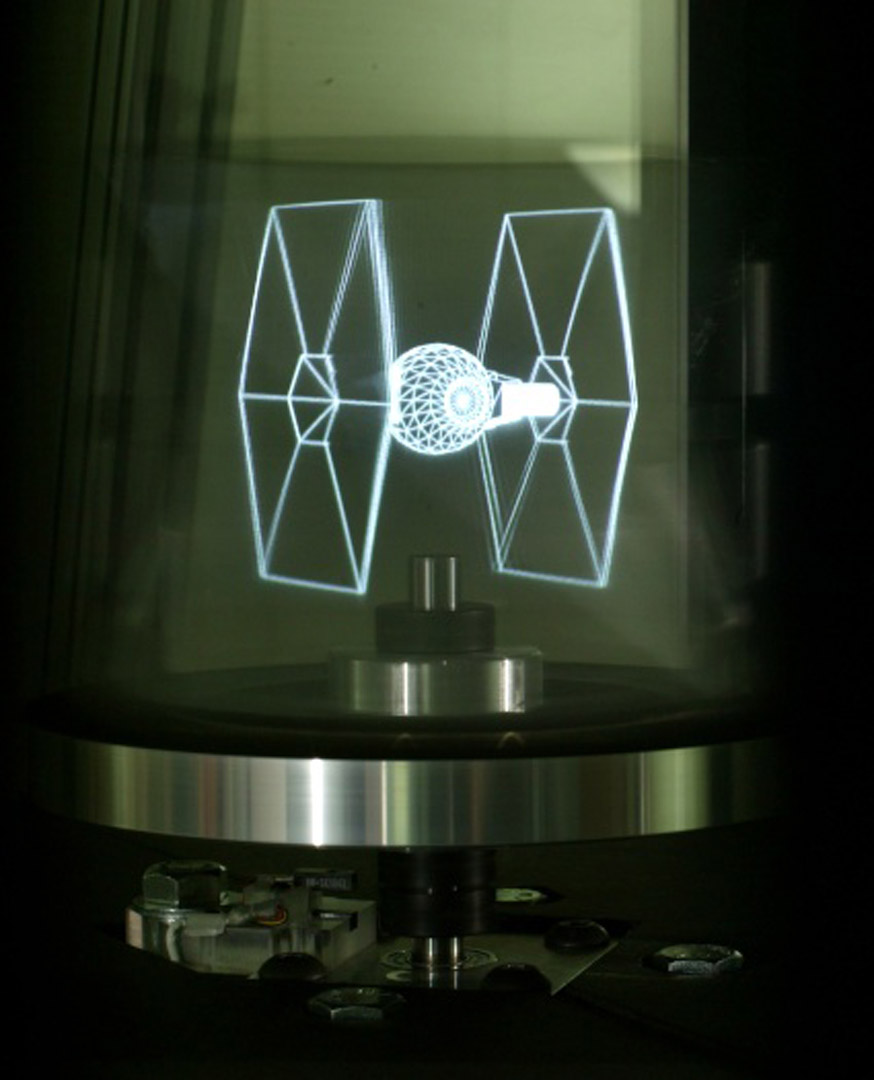“An Interactive 360° Light Field Display” by Jones, McDowall, Yamada, Bolas and Debevec
Conference:
- SIGGRAPH 2007
-
More from SIGGRAPH 2007:


Type(s):
Entry Number: 01
Title:
- An Interactive 360° Light Field Display
Presenter(s):
Description:
Introduction
While a great deal of computer generated imagery is modeled and rendered in 3D, the vast majority of this 3D imagery is shown on 2D displays. Various forms of 3D displays have been contemplated and constructed for at least one hundred years [Lippman 1908], but only recent evolutions in digital capture, computation, and display have made functional and practical 3D displays possible.
We present an easily reproducible, low-cost 3D display system with a form factor that offers a number of advantages for displaying 3D objects in 3D. We develop and demonstrate the projection mathematics and rendering methods necessary to drive the display with real-time raster imagery or pre-recorded light fields so that they exhibit the correct cues of both horizontal and vertical parallax. The display is autostereoscopic, requiring no special viewing glasses, omnidirectional, allowing viewers to be situated anywhere around it, and multiview, producing a correct rendition of the light field with the correct horizontal parallax and vertical perspective for any viewpoint situated at a certain distance and height around the dis- play. Furthermore, if head tracking is employed to detect the height and distance of one or more of the viewers around the the display, our display allows the rendered perspective to be adjusted on the fly to allow the tracked users to properly see objects from arbitrary heights and distances in addition to obtaining correct views from any angle around the display. Our display uses primarily commodity graphics and display components and achieves real-time rendering with non-trivial scene complexity across its entire field of view. Our contributions include:
• An easily reproducible, low-cost 360◦ horizontal-parallax light field display system leveraging commodity graphics and projection display hardware.
• A novel software/hardware architecture that enables real-time update of high-speed video projection using standard graphics hardware at kilohertz frame rates.
• A novel projection algorithm for rendering multiple center of projection raster graphics for a 360◦ horizontal-parallax light field display with correct vertical perspective for any given viewer height and distance.
• A light field display technique that is horizontally multiview autostereoscopic and employs vertical head tracking to pro- duce correct vertical parallax for tracked users.
Other Information:
References
AGOCS, T., BALOGH, T., FORGACS, T., BETTIO, F., GOBBETTI, E., ZANETTI, G., AND BOUVIER, E. 2006. A large scale interactive holographic display. In VR ’06: Proceedings of the IEEE Virtual Reality Conference (VR 2006), IEEE Computer Society, Washington, DC, USA, 57.
BALOGH, T., DOBRANYI, Z., FORGACS, T., MOLNAR, A., SZLOBODA, L., GOB– BETTI, E., MARTON, F., BETTIO, F., PINTORE, G., ZANETTI, G., BOUVIER, E., AND KLEIN, R. 2006. An interactive multi-user holographic environment. In SIGGRAPH ’06: ACM SIGGRAPH 2006 Emerging technologies, ACM Press, New York, NY, USA, 18.
BATCHKO, R. G. 1994. Three-hundred-sixty degree electro-holographic stereogram and volumetric display system. In Proc. SPIE, vol. 2176, 30–41.
CHAI, J.-X., TONG, X., CHAN, S.-C., AND SHUM, H.-Y. 2000. Plenoptic sampling. In Proceedings of ACM SIGGRAPH 2000, Computer Graphics Proceedings, Annual Conference Series, 307–318.
COSSAIRT, O., TRAVIS, A. R., MOLLER, C., AND BENTON, S. A. 2004. Novel view sequential display based on dmd technology. In Proc. SPIE, Stereoscopic Displays and Virtual Reality Systems XI, A. J. Woods, J. O. Merritt, S. A. Benton, and M. T. Bolas, Eds., vol. 5291, 273–278.
COSSAIRT, O. S., NAPOLI, J., HILL, S. L., DORVAL, R. K., AND FAVALORA, G. E. 2007. Occlusion-capable multiview volumetric three-dimensional display. Applied Optics 46, 8 (Mar), 1244–1250.
DODGSON, N. A. 2005. Autostereoscopic 3d displays. Computer 38, 8, 31–36.
ENDO, T., KAJIKI, Y., HONDA, T., AND SATO, M. 2000. Cylindrical 3d video display observable from all directions. In 8th Pacific Conference on Computer Graphics and Applications, 300–306.
FAVALORA, G. E. 2005. Volumetric 3d displays and application infrastructure. Computer 38, 8, 37–44.
GORTLER, S. J., GRZESZCZUK, R., SZELISKI, R., AND COHEN, M. F. 1996. The lumigraph. In Proceedings of SIGGRAPH 96, Computer Graphics Proceedings, Annual Conference Series, 43–54.
HALLE, M. W., BENTON, S. A., KLUG, M. A., AND UNDERKOFFLER, J. S. 1991. The ultragram: A generalized holographic stereogram.
HOU, X., WEI, L.-Y., SHUM, H.-Y., AND GUO, B. 2006. Real-time multi-perspective rendering on graphics hardware. In Rendering Techniques 2006: 17th Eurographics Workshop on Rendering, 93–102.
ISAKSEN, A., MCMILLAN, L., AND GORTLER, S. J. 2000. Dynamically reparameterized light fields. In Proceedings of ACM SIGGRAPH 2000, Computer Graphics Proceedings, Annual Conference Series, 297–306.
JONES, A., DEBEVEC, P., BOLAS, M., AND MCDOWALL, I. 2006. Concave surround optics for rapid multiview imaging. In Proceedings of the 25th Army Science Conference.
JONES, A., MCDOWALL, I., YAMADA, H., BOLAS, M., AND DEBEVEC, P. 2007. Rendering for an interactive 360 degree light field display. In ACM Transactions on Graphics.
LEVOY, M., AND HANRAHAN, P. M. 1996. Light field rendering. In Proceedings of ACM SIGGRAPH 96, Computer Graphics Proceedings, Annual Conference Series, 31–42.
LIPPMAN, G. 1908. Epreuves reversibles donnant la sensation du relief. Journal of Physics 7, 4 (Nov), 821–835.
MAEDA, H., HIROSE, K., YAMASHITA, J., HIROTA, K., AND HIROSE, M. 2003. All-around display for video avatar in real world. In ISMAR ’03: Proceedings of the The 2nd IEEE and ACM International Symposium on Mixed and Augmented Reality, IEEE Computer Society, Washington, DC, USA, 288.
OSTROMOUKHOV, V. 2001. A simple and efficient error-diffusion algorithm. In Proceedings of ACM SIGGRAPH 2001, Computer Graphics Proceedings, Annual Conference Series, 567–572.
OTSUKA, R., HOSHINO, T., AND HORRY, Y. 2006. Transpost: A novel approach to the display and transmission of 360 degrees-viewable 3d solid images. IEEE Transactions on Visualization and Computer Graphics 12, 2, 178–185.
TANAKA, K., AND AOKI, S. 2006. A method for the real-time construction of a full parallax light field. In Stereoscopic Displays and Virtual Reality Systems XIII. Edited by Woods, Andrew J.; Dodgson, Neil A.; Merritt, John O.; Bolas, Mark T.; McDowall, Ian E. Proceedings of the SPIE, Volume 6055, pp. 397-407 (2006)., A. J. Woods, N. A. Dodgson, J. O. Merritt, M. T. Bolas, and I. E. McDowall, Eds., 397–407.
TRAVIS, A. R. L. 1997. The display of three-dimensional video images. Proceedings of the IEEE 85, 11 (Nov), 1817–1832.
WILBURN, B., JOSHI, N., VAISH, V., TALVALA, E.-V., ANTUNEZ, E., BARTH, A., ADAMS, A., HOROWITZ, M., AND LEVOY, M. 2005. High performance imaging using large camera arrays. ACM Transactions on Graphics 24, 3 (Aug), 765–776.
YANG, J. C., EVERETT, M., BUEHLER, C., AND MCMILLAN, L. 2002. A real-time distributed light field camera. In Rendering Techniques 2002: 13th Eurographics Workshop on Rendering, 77–86.
YENDO, T., KAWAKAMI, N., AND TACHI, S. 2005. Seelinder: the cylindrical light- field display. In SIGGRAPH ’05: ACM SIGGRAPH 2005 Emerging technologies, ACM Press, New York, NY, USA, 16.
ZWICKER, M., MATUSIK, W., DURAND, F., AND PFISTER, H. 2006. Antialiasing for automultiscopic 3d displays. In Rendering Techniques 2006: 17th Eurographics Workshop on Rendering, 73–82.
Additional Images:
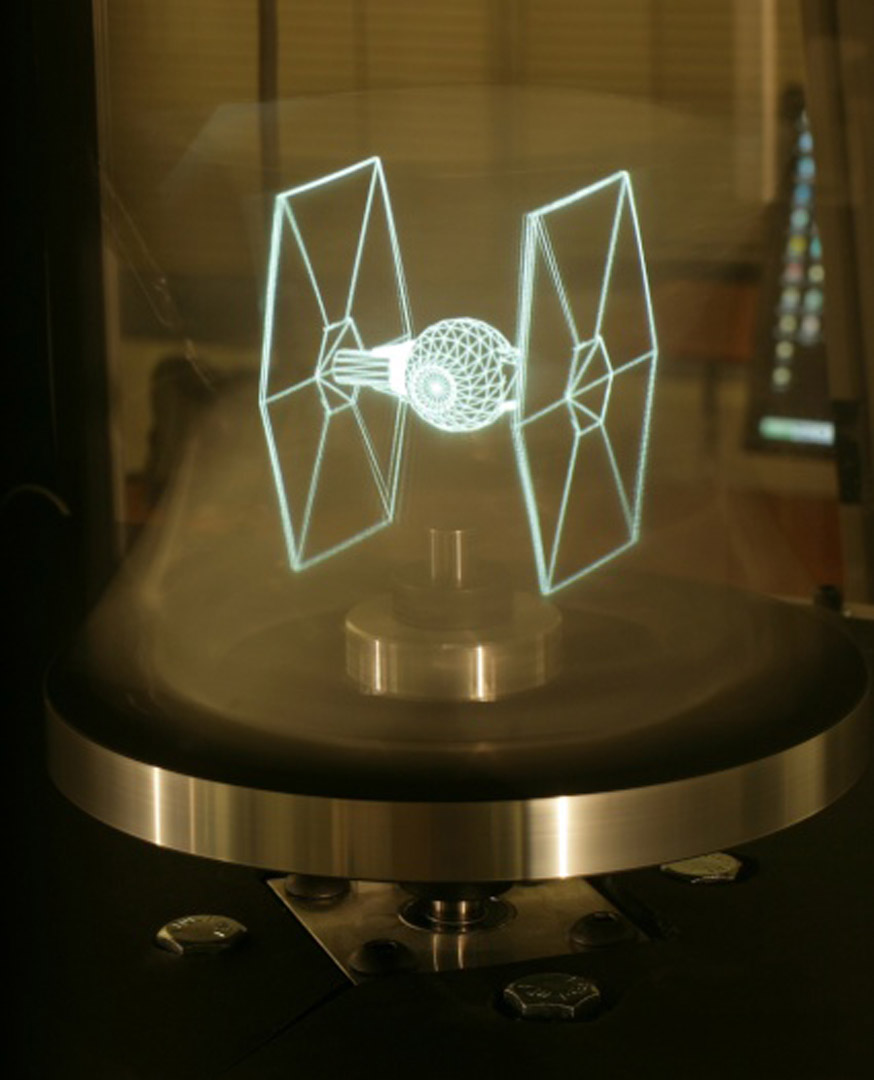
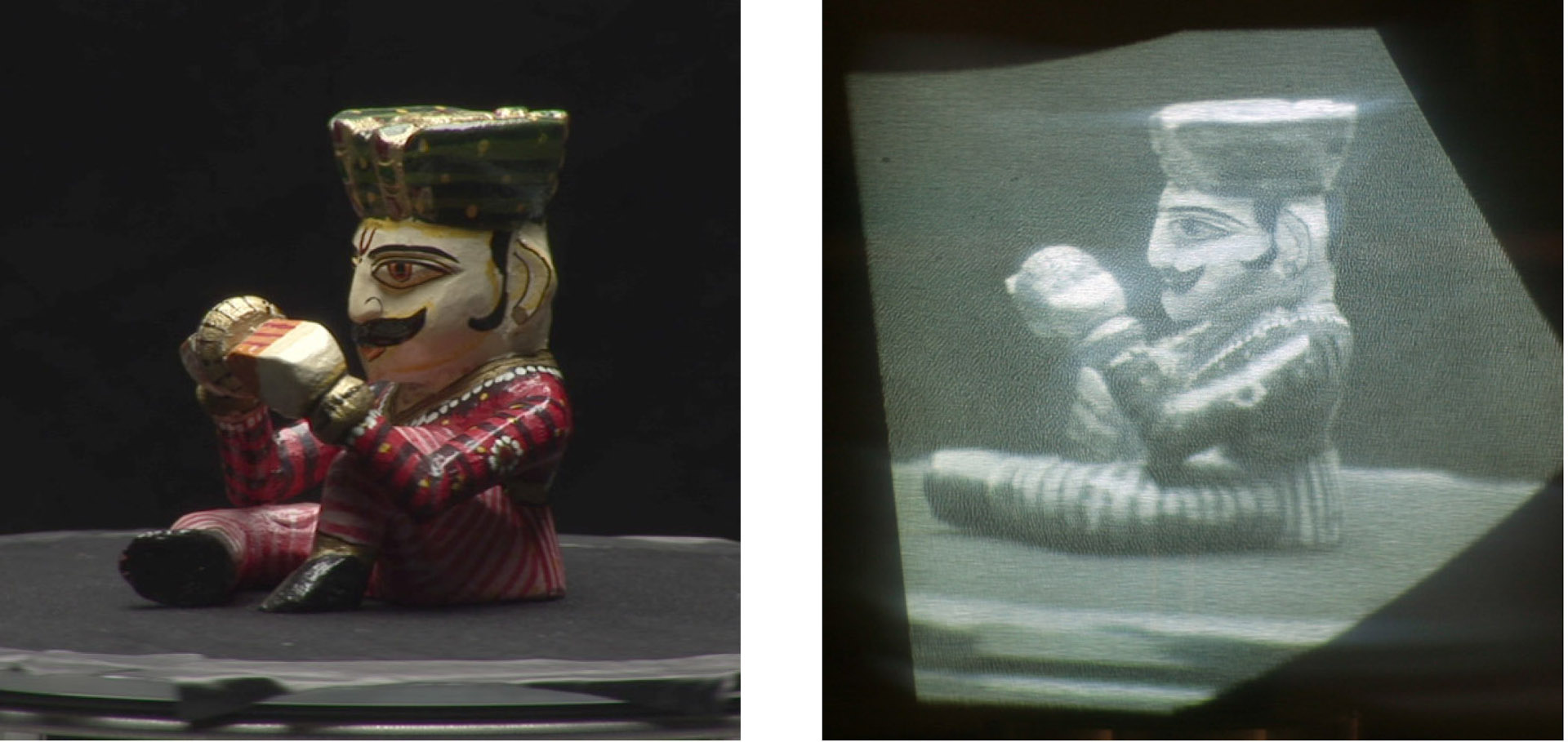
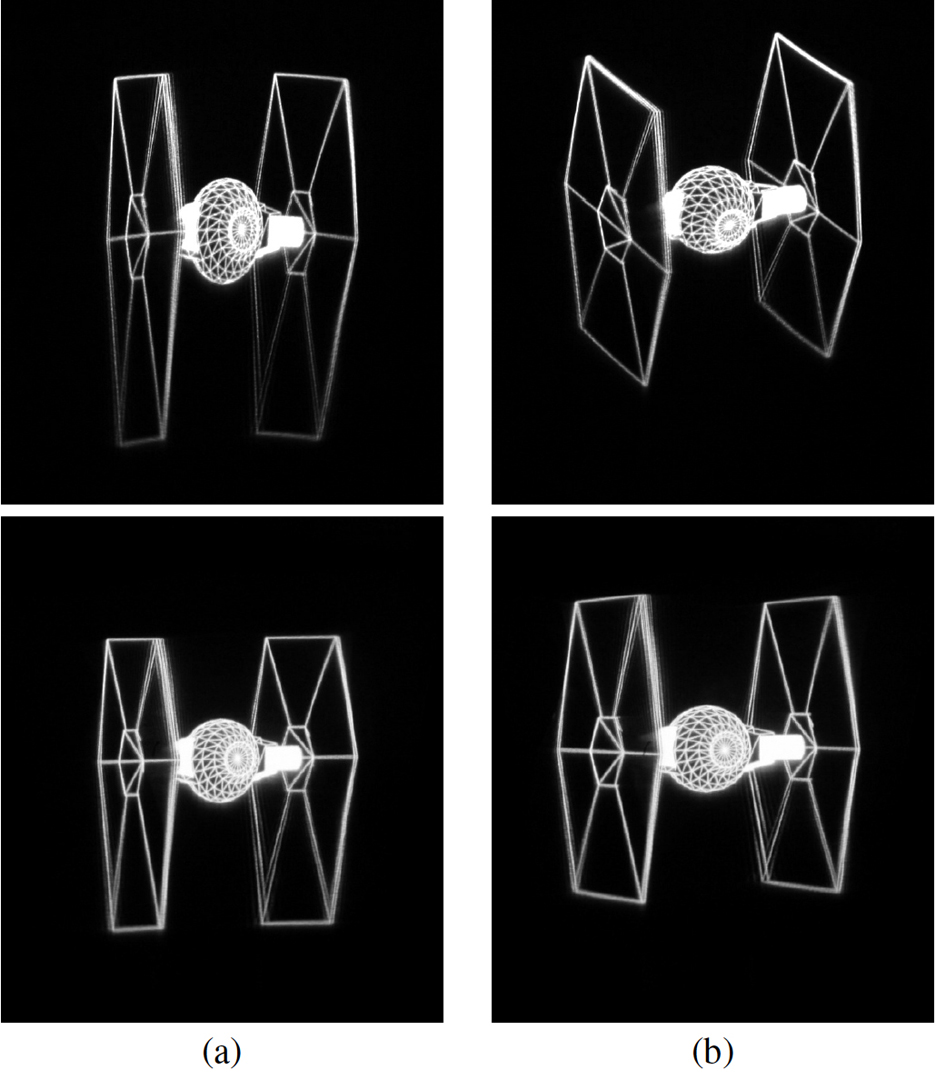
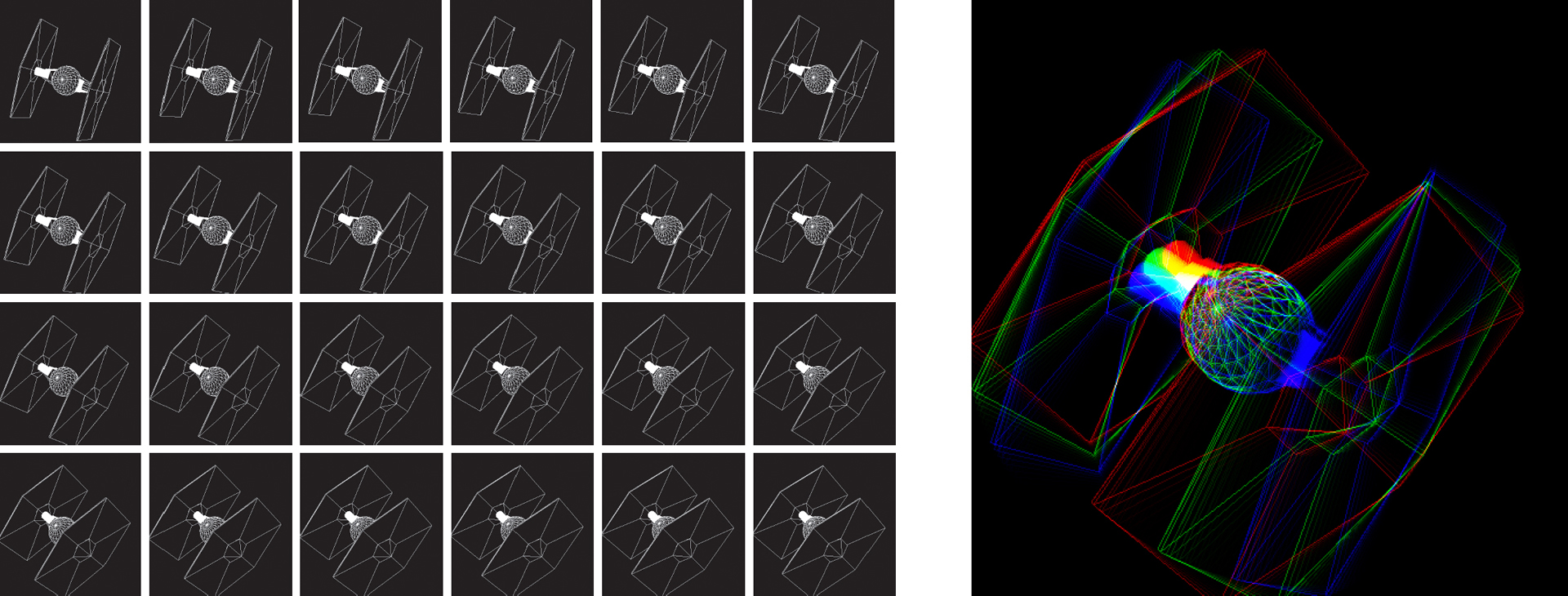
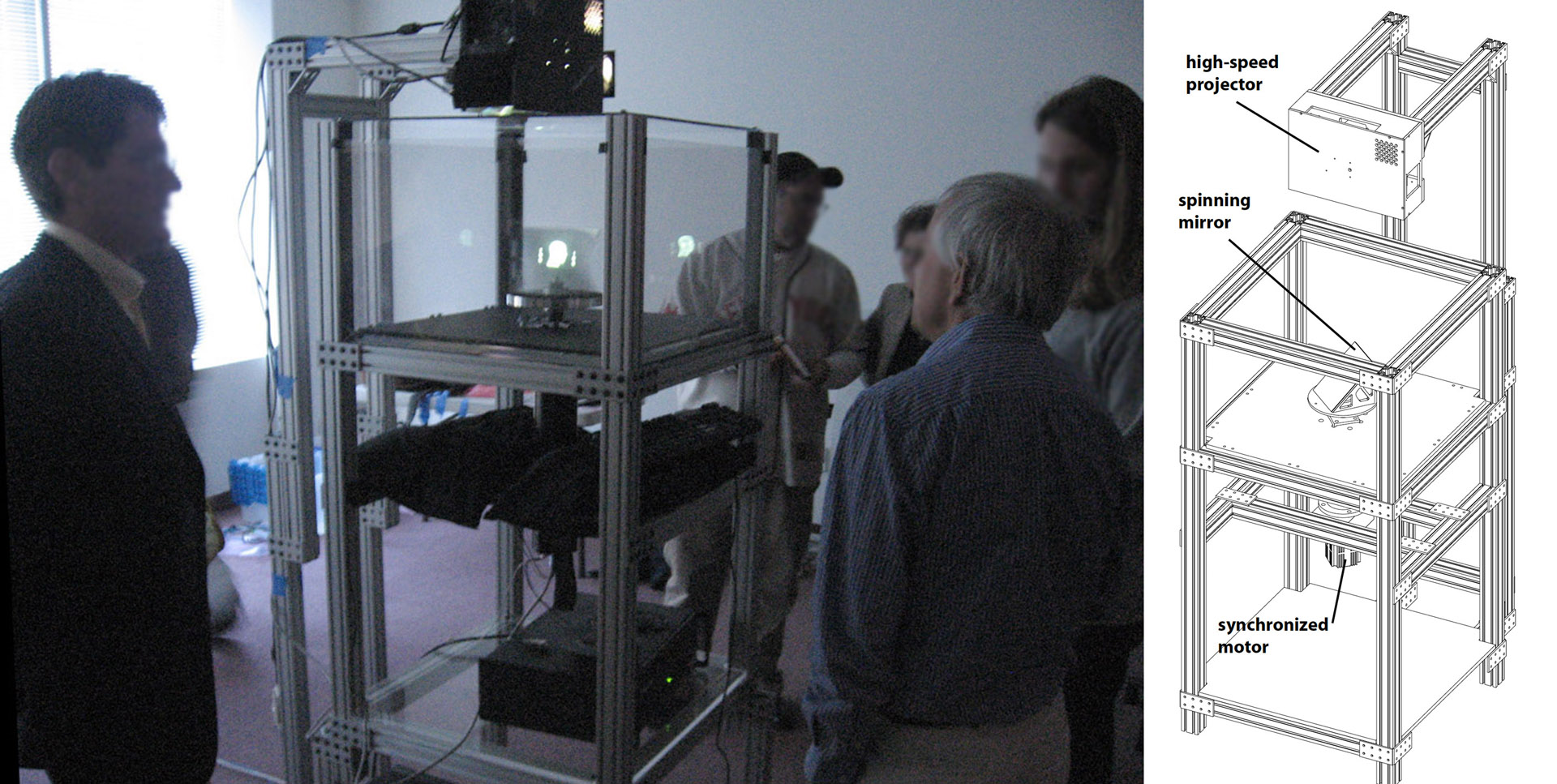

Acknowledgements:
The authors wish to thank Bruce Lamond, Naho Inamoto, Tim Hawkins, Pieter Peers, Dell Lunceford, Tom Pereira, Jacki Morie, Sean Bouchard, Bill Swartout, Randy Hill, and Randolph Hall for their support and assistance with this work. This work was sponsored by the University of Southern California Office of the Provost and the U.S. Army Research, Development, and Engineering Command (RDECOM). The high-speed projector was originally developed by a grant from the Office of Naval Research under the guidance of Ralph Wachter. The content of the information does not necessarily reflect the position or the policy of the US Government, and no official endorsement should be inferred.


